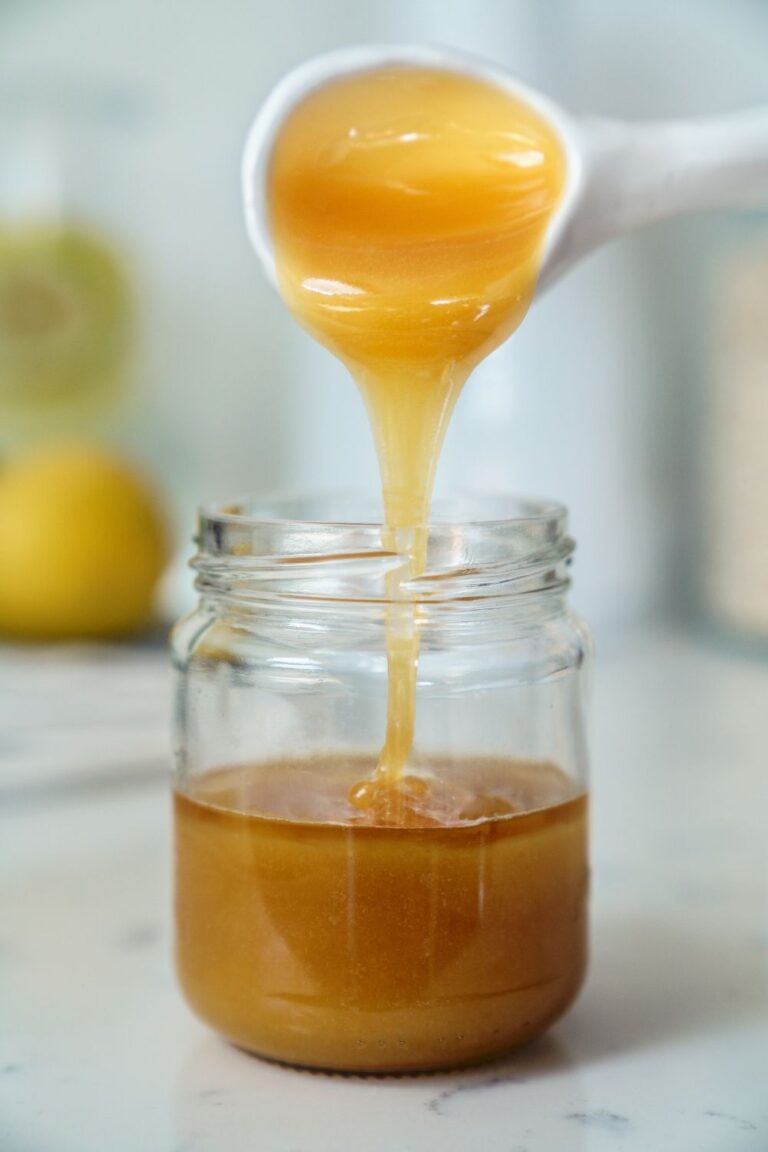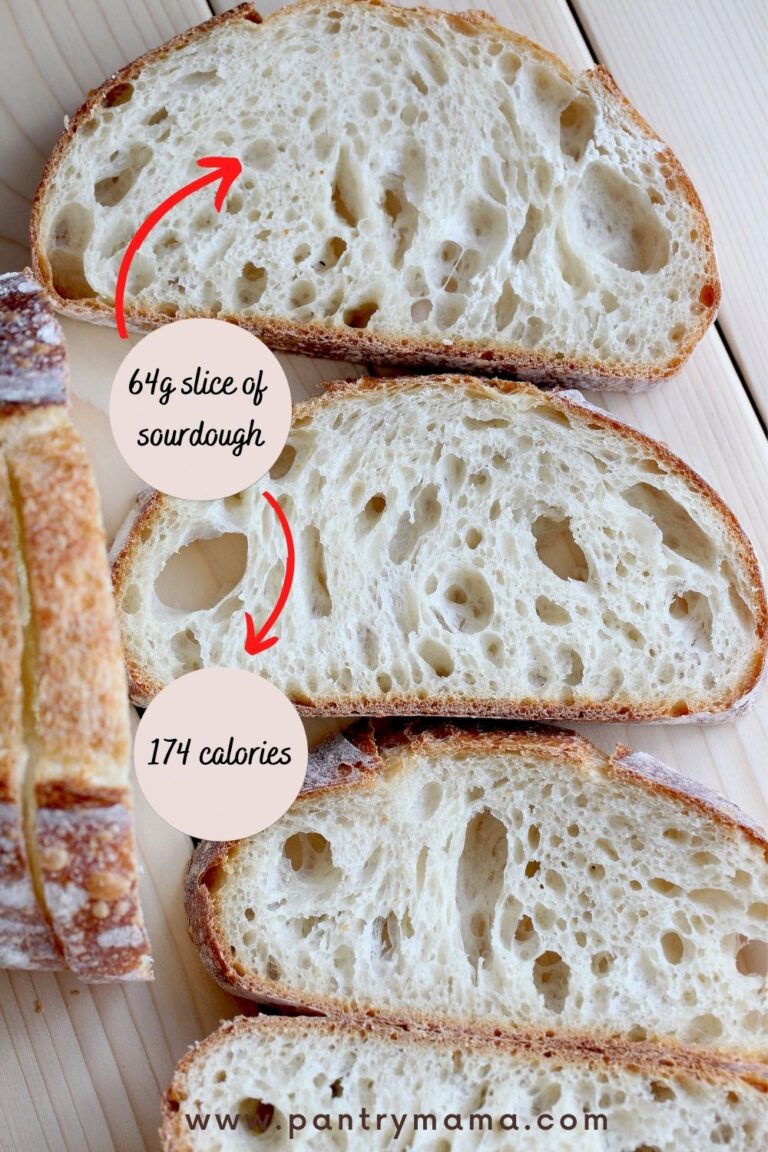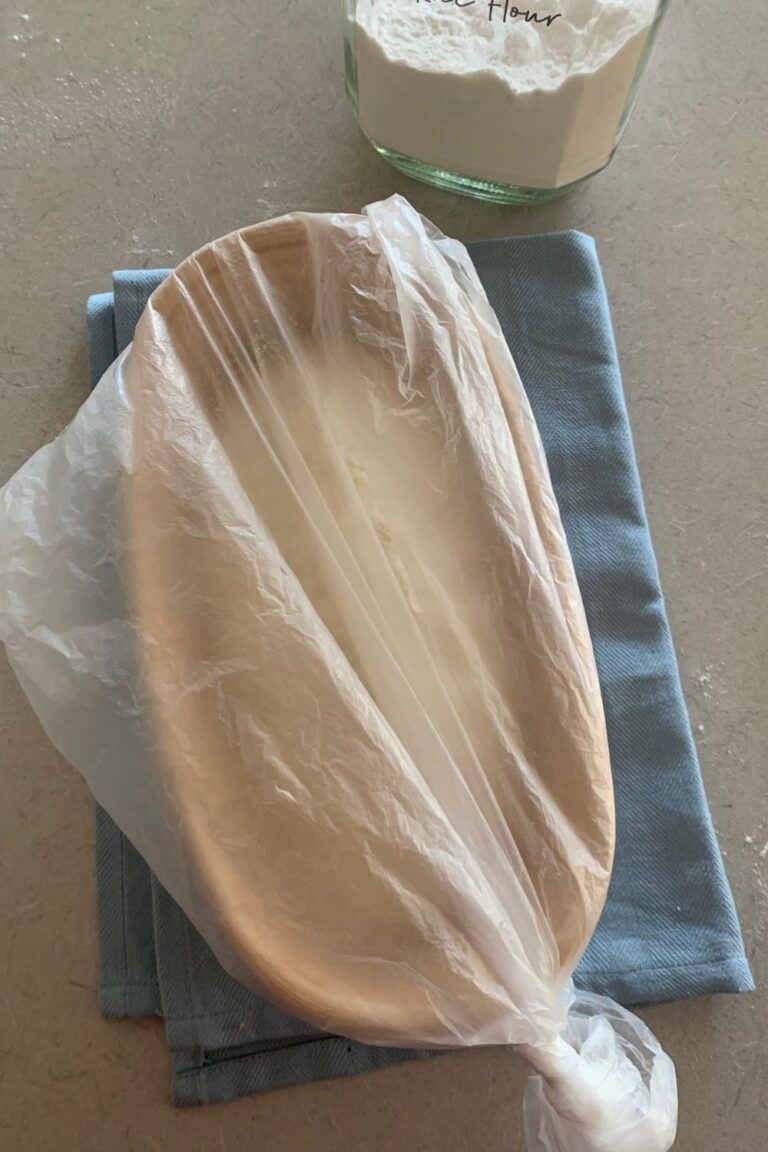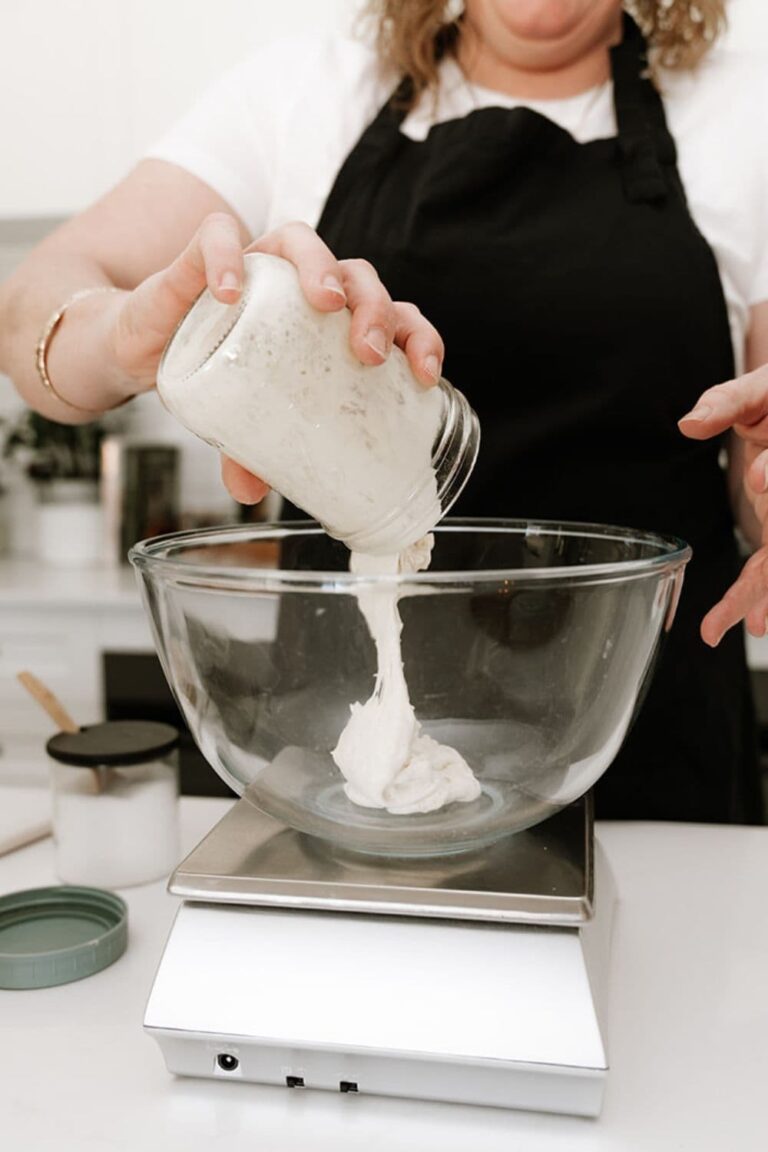Help! My Sourdough Bread Deflates When Scored
This post may contain affiliate links.
If your sourdough bread deflates when scored, it indicates that there are issues with fermentation and even shaping.
It can be heartbreaking when your hard work seems to deflate before your eyes.
But the good news is that there are things you can do to your sourdough from flattening after scoring.
You should always bake it, even if it's deflated. You'll still have a loaf of bread, it will just be lacking oven spring. And you can also diagnose sourdough bread problems more easily from baked bread.
So why does your sourdough collapse when you score it?
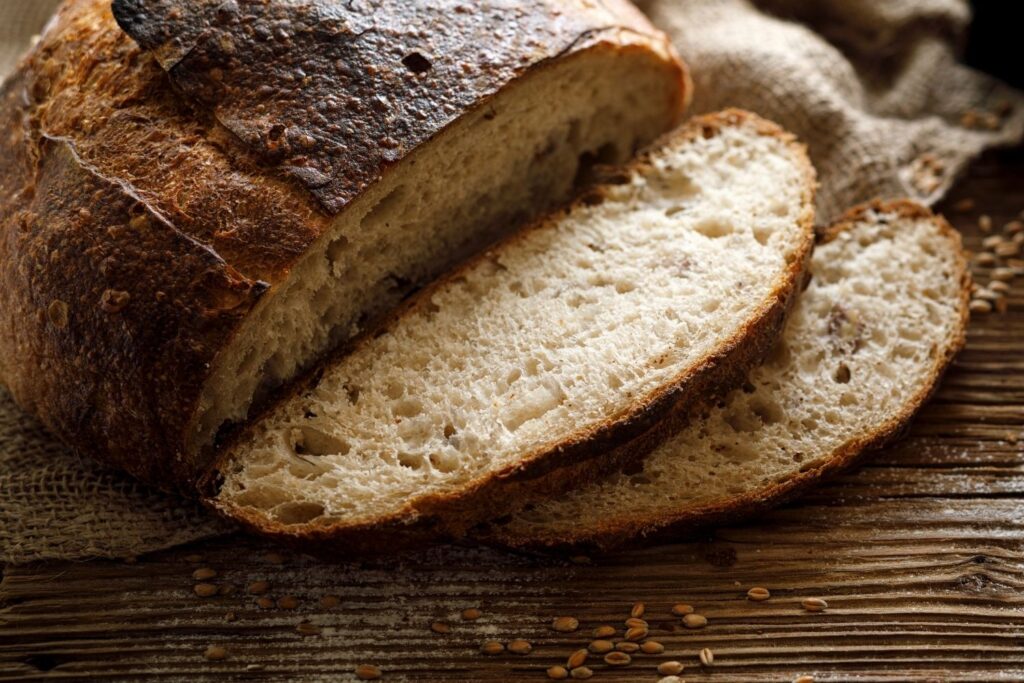
What Causes Sourdough Bread To Deflate When Scored?
More often than not, sourdough bread deflates when scored if it's been over proofed.
If you shape the dough and then place into the fridge for cold fermentation (or proofing as it's sometimes referred to), the dough will continue to ferment.
It is possible for it to grow, even in the fridge (even though your dough shouldn't rise too much during the cold ferment).
If it puffs up too much, when you cut it with your lame or razor, the dough will collapse, much like a balloon that's been popped.
It's heart breaking when you see your hard work collapse!
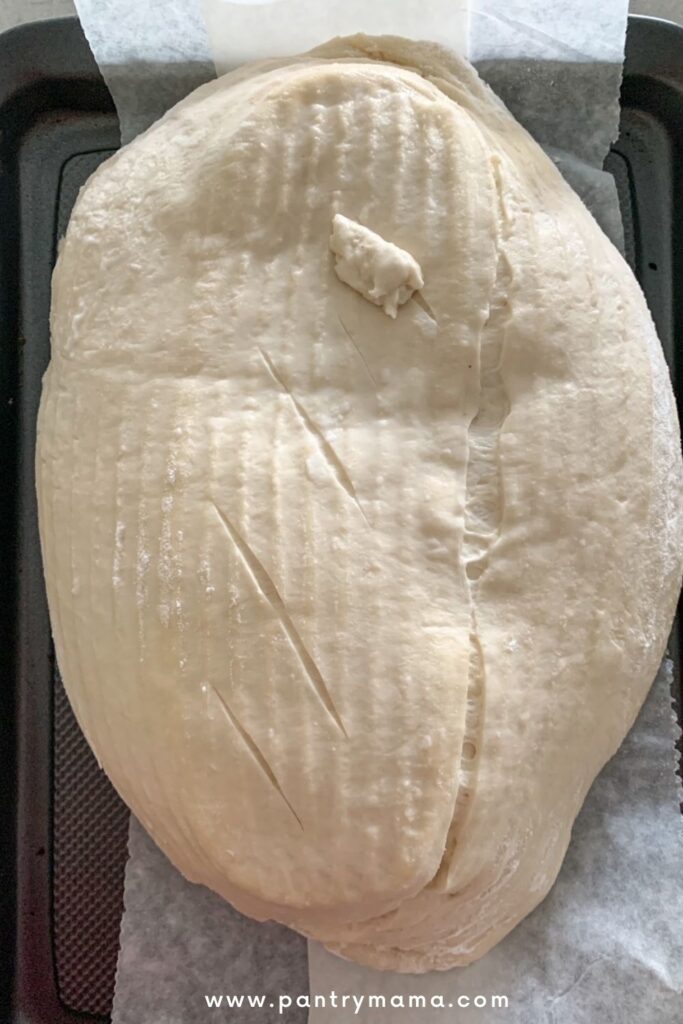
How To Prevent Sourdough From Deflating
If you want to prevent sourdough from deflating when you score, you must ensure that the dough isn't over fermented.
This isn't as easy as it sounds sometimes. But with some careful planning, you can make sure that your dough is "just right".
Here's how to prevent your dough from deflating:
- Ensure your dough develops a strong gluten network - this is so important!
- Keep a close eye on your bulk fermentation. You want the dough to just double. There's a good guide to knowing when bulk fermentation is finished here.
- Practice your shaping technique - the better you get at shaping, the better your sourdough will turn out! Check out this shaping video for making a batard.
- Check the temperature of your fridge to ensure it's 3C or under - this will prevent your dough from over proofing during the cold ferment.
- If you feel your dough has over fermented a little in bulk ferment or that it will over proof in the fridge, pop it in the freezer for 30 minutes. Then straight into a HOT Dutch Oven. Cold proofing for longer could cause further over fermentation.
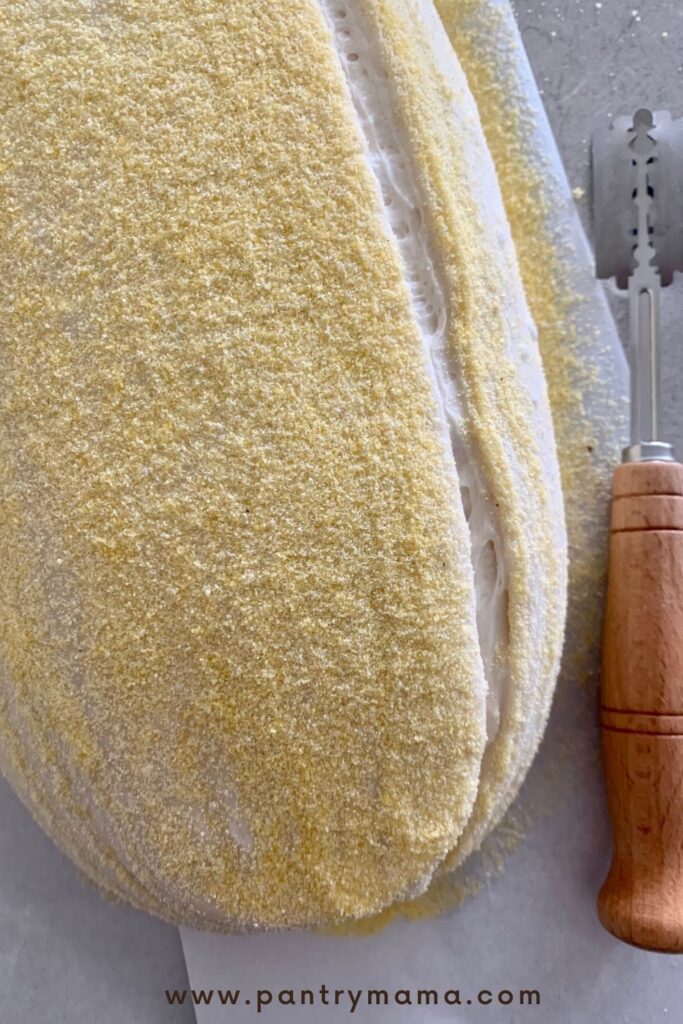
When Not To Score Your Sourdough
If you have over fermented your dough, or it's over proofed in the fridge, it's best not to score it before placing it in the oven.
When you score over proofed dough, it will deflate like a balloon.
Not scoring it will allow the dough to retain the gas bubbles that have formed.
And while you may not get huge oven spring, you'll still be retaining a little more rise than if you slash it.
Scoring ultimately helps your sourdough to break open in a more controlled manner. Not scoring may mean that your sourdough breaks open at its weakest point. You'll get a more rustic looking loaf.
But, you'll ultimately get a better loaf of sourdough, than if you had slashed it and it flattened after scoring, losing all oven spring.
My Blade Pulls On The Sourdough When Scoring
If you are scoring your sourdough and the blade is pulling or catching on the dough, there is usually an issue with the tension or fermentation of your dough.
The blade (as long as it's clean and sharp) should easily glide through your dough and leave a neat, smooth cut. This should help to give you a cracking sourdough ear.
Many people say you need to dip your lame in oil or water, however, you shouldn't need to.
The best ways to prevent your blade pulling on your dough when scoring sourdough are:
- Always use a clean, new blade when scoring. This will give you the cleanest score possible.
- Ensure that you develop a strong gluten network when stretching and folding your dough.
- Practice your shaping technique. A nice tight shaping technique gives your sourdough a firm skin that holds in all those beautiful gas bubbles. If this skin is loose, it will cause the lame to catch.
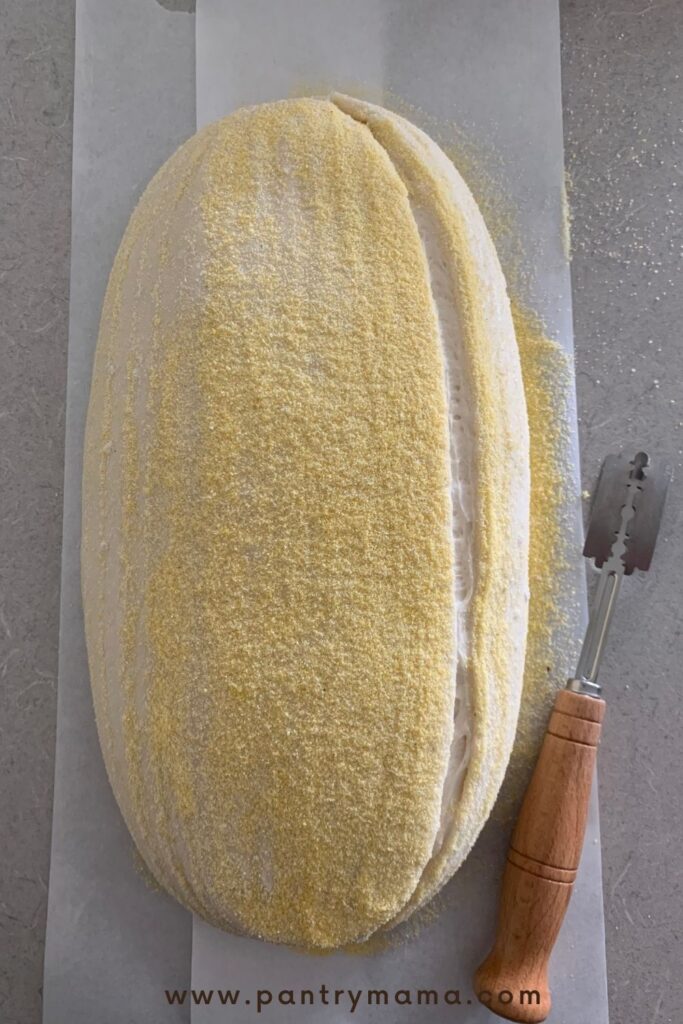
Frequently Asked Questions
You don't want to score so deep that your bread loses structure, but around ¼" to ½" will suffice. You should be able to see all the beautiful gas bubbles start to open up as you score your bread. Sourdough bread can deflate if you score too deep so try not to get too heavy handed.
Scoring allows you to control where your sourdough opens up when it's baked. If you don't score it, it will open or break at its weakest point. You may find you have a few openings or tears. This will result in a rustic looking sourdough. There is also a chance your sourdough won't break open at all - if it doesn't have enough energy left to spring up, it may bake intact.
Wet, sticky sourdough is caused by many different factors. While using too much water is the obvious reason, it can also become wet and sticky through over fermentation or a poor gluten network. You'll find a guide on how to fix it and how to prevent it for next time here.
Yes. If you over stretch and fold your sourdough, you will start to break down the gluten network you worked so hard to create. This will result in slack, sticky dough with little structure.
You can use a knife or scissors to score sourdough bread. However, you'll almost always get a better result if you use a razor blade or lame. It needs to be clean and sharp and will then glide through the dough giving you a clean, crisp cut.

Further Reading
If you found this article on why sourdough bread deflates when scored, you might find these helpful:
- How to deal with wet, sticky sourdough - and how to prevent it!
- Bulk fermentation vs cold fermentation - learn why they're not interchangeable.


